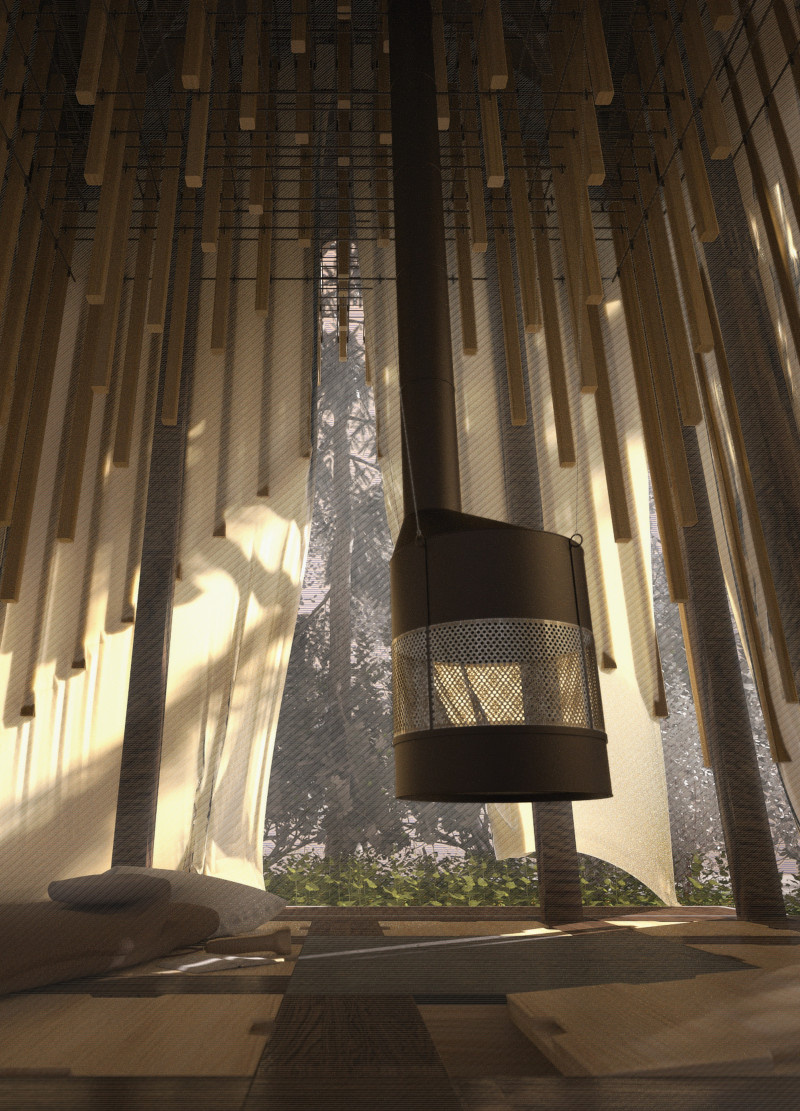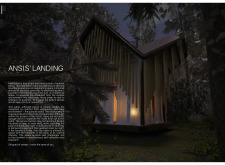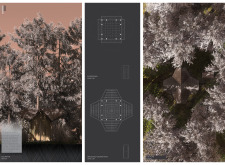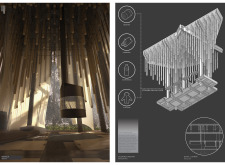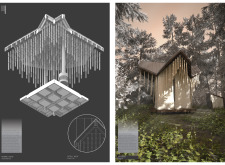5 key facts about this project
The function of Ansis’ Landing is multifaceted, serving primarily as a retreat for meditation and contemplation. The architecture promotes an immersive experience that encourages individuals to connect with themselves and the natural world. By stripping away unnecessary distractions, the cabin allows occupants to focus entirely on their thoughts and surroundings. The rectangular and angular form of the building is designed to harness natural light and draw the eye towards the sky, thus creating an uplifting atmosphere conducive to meditation.
One of the notable aspects of this project is its careful consideration of materiality. The primary material employed is wood, which not only serves structural purposes but also enhances the sensory experience within the cabin. The vertical wooden elements create a rhythm that mimics the surrounding trees, fostering a sense of continuity between the cabin and its environment. The choice of wooden materials conveys warmth and comfort while ensuring the structure blends seamlessly into the forest.
In terms of design features, the cabin showcases an innovative roof that intersects at various angles, allowing for efficient water drainage and optimal light penetration. This dynamic roof structure effectively frames views of the surroundings and helps in reinforcing the meditative experience by connecting the interior space with the ever-changing nature outside. The integration of soft, translucent materials in the walls allows diffused sunlight to filter into the cabin, providing a gentle illumination that enhances the calming atmosphere.
The interior layout is intentionally kept open, allowing for flexibility in how the space is utilized. A central fireplace anchors the area, acting as a focal point for gatherings, warmth, or solitude. This feature reflects the project’s aim to create a communal space while also offering private corners for individual contemplation. Integrated storage solutions within the floor maintain the minimalist ethos by keeping the space uncluttered and functional.
The site plan is thoughtfully executed, with the cabin strategically placed to offer both privacy and unobstructed views of the natural landscape. Surrounding flora acts as a natural buffer, enhancing the feeling of seclusion and further immersing inhabitants in the serene environment. This deliberate interaction with the site illustrates a unique design approach that elevates the experience of being in the cabin.
Unique features of Ansis’ Landing include its adaptive management of light and space. The varying degrees of transparency offered by the materials provide an ever-evolving connection between the occupants and the outdoors. This relationship between architecture and nature aligns closely with the project’s intent, fostering moments of reflection and engagement throughout different times of the day.
In summary, Ansis’ Landing successfully combines thoughtful architectural design with a profound respect for its environment. The project serves not just as a physical structure but as an experience that encourages a deeper connection between individuals, their thoughts, and the nature that surrounds them. To explore the architectural plans, sections, and designs in greater detail, please take the opportunity to delve into the project presentation and uncover the intricate ideas behind this unique meditation cabin.


